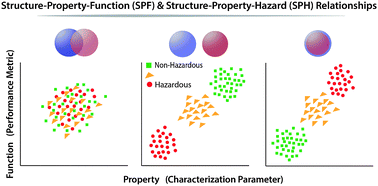Designing nanomaterials to maximize performance and minimize undesirable implications guided by the Principles of Green Chemistry
Abstract
The Twelve Principles of Green Chemistry were first published in 1998 and provide a framework that has been adopted not only by chemists, but also by design practitioners and decision-makers (e.g., materials scientists and regulators). The development of the Principles was initially motivated by the need to address decades of unintended environmental pollution and human health impacts from the production and use of hazardous chemicals. Yet, for over a decade now, the Principles have been applied to the synthesis and production of engineered nanomaterials (ENMs) and the products they enable. While the combined efforts of the global scientific community have led to promising advances in the field of nanotechnology, there remain significant research gaps and the opportunity to leverage the potential global economic, societal and environmental benefits of ENMs safely and sustainably. As such, this tutorial review benchmarks the successes to date and identifies critical research gaps to be considered as future opportunities for the community to address. A sustainable material design framework is proposed that emphasizes the importance of establishing structure–property–function (SPF) and structure–property–hazard (SPH) relationships to guide the rational design of ENMs. The goal is to achieve or exceed the functional performance of current materials and the technologies they enable, while minimizing inherent hazard to avoid risk to human health and the environment at all stages of the life cycle.

- This article is part of the themed collection: Sustainable Nanotechnology

 Please wait while we load your content...
Please wait while we load your content...